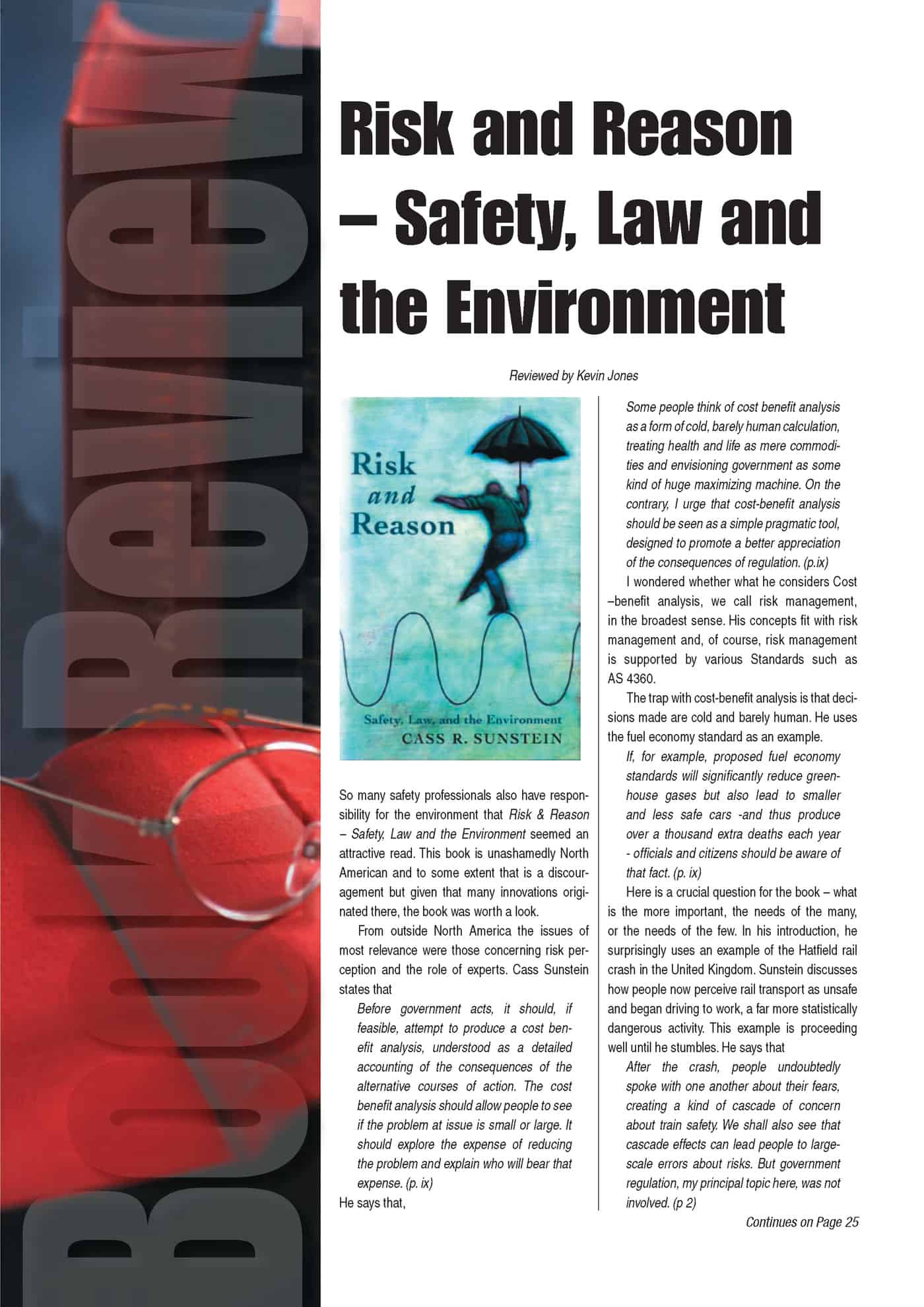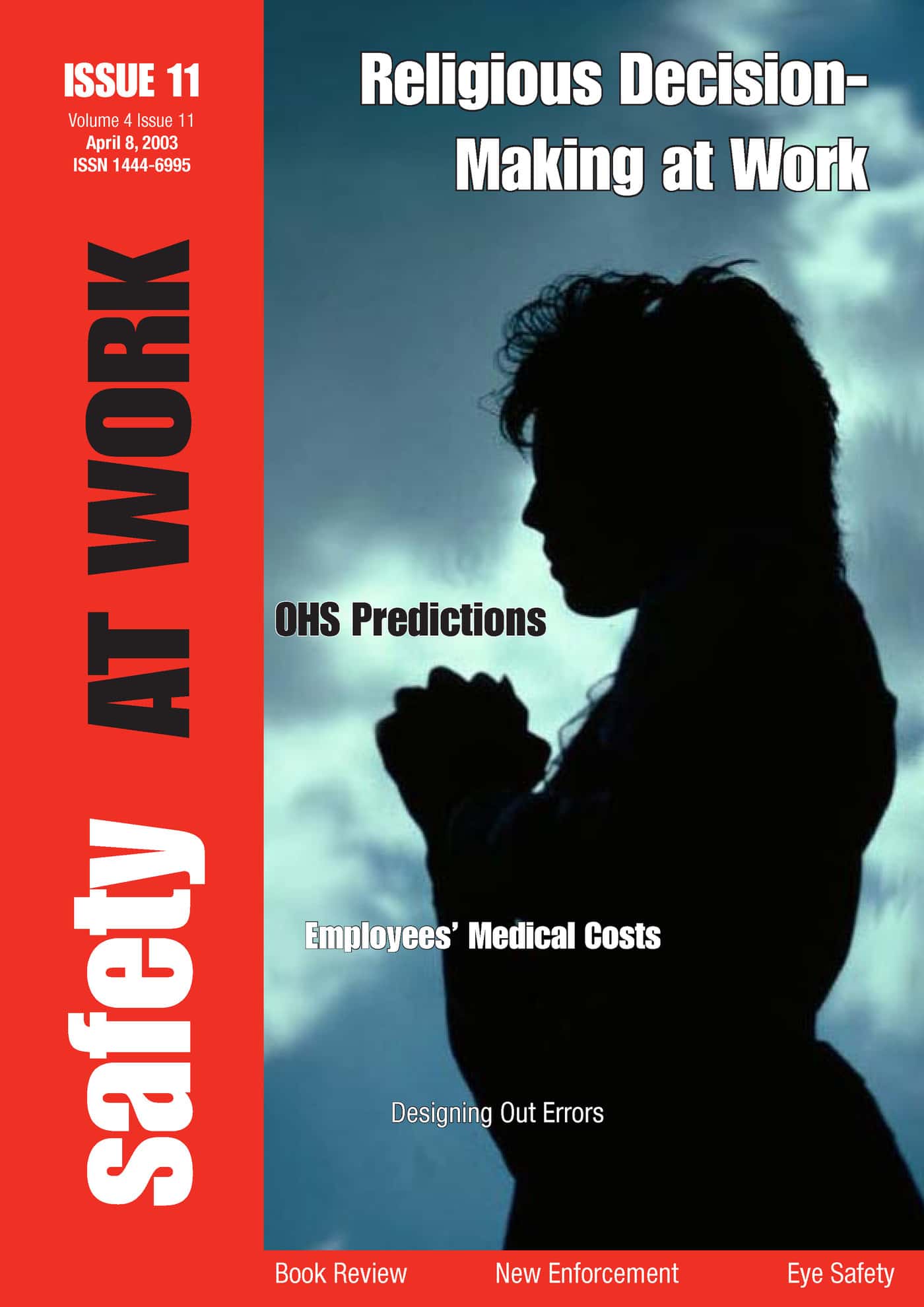The first control measure on the “hierarchy of controls” is to eliminate the hazard. OHS consultants and professionals should always consider ways to achieve this. It may prove to be impractical, or politically unpopular, but it should always be discussed or recommended. Reports and submissions that do not consider this control measure can be considered invalid.
In late-January 2009, the organic farmers in Australia reminded the media that its farming members are developing a safer industry for the customer and the producer. This industry has boomed in Australia since the 1970’s in as a result of a desire and commitment to “eliminate the hazard”.
Interviews conducted by Biological Farmers of Australia (BFA) to help discover why producers ‘go organic’ reveal a high number of farmers consider the switch for the health of themselves and their families.
Rob Bauer (Bauers Organic Farm, Qld), one of Australia’s largest organic horticultural growers, says he turned to organic farming 27 ago after farmers in his area became ill with cancer.
He says he wanted to decrease health risks associated with synthetic farm chemicals.
“I started thinking about farming differently after growing up in the Lockyer Valley (Qld) where friends and family passed away in their fifties after years of intensive agrichemical production.”
He says neurological problems, tumours, and cancer were among the chronic diseases he watched take their toll on his local farming community.
“I wasn’t comfortable with producing food using harsh farm chemicals for consumers,” he says.
Steve Skopilianos, commercial lettuce producer from Ladybird Organics in Keilor (Vic) looked into organics when he started a family.
“We had been applying pesticide blends with no understanding of their effect on people and employees. There were times prior to organic conversion where I would not take my own produce home for my family to eat.”
Biodynamic producers of macadamias are happy to avoid high levels of agrichemicals typically used on the nuts.
“Working without a high exposure to synthetic chemical farm products is a weight off your mind,” says Marco Bobbert, from Wodonga Park Fruit and Nuts macadamia plantation (Qld), certified biodynamic since 1987.
He says direct chemical exposure could easily occur on conventional farms from accidents in production. “All it takes is a broken spray pipe.”
He says it is not just organic farmers who are concerned – “All farmers try to minimise their contact with chemicals on-farm. But organic production actively works toward negating that risk”.
Research has shown there is good reason for producers’ concern – a high exposure to some farm chemicals can lead to major health problems.
Particularly problematic substances include organophosphate insecticides and pesticides, which have been connected to several types of cancer, sterility and cognitive deficits (1).
The agrichemical endosulfan is one example of a highly toxic organochlorine cyclodiene) insecticide still in use in Australia.
1. (1) Ciesielski, S, Loomis, D, Rupp Mims, S, Auer, A, Pesticide Exposures, Cholinesterase Depression, and Symptoms among North Carolina Migrant Farmworkers; American Journal of Public Health, 1994.


